Career Pivot Stories: Trading Marketing KPIs for Oil Canvases
Inside Kasturi Kiritharan’s brushstroke rebellion against hustle culture.
What if your bravest move this year isn’t to reinvent yourself, but a return to something you loved as a child?
When Kasturi enrolled in the Year Long Painting Course at Leith School of Art, she didn’t set out to become a professional painter. But she also didn’t set out to become someone who ignored the voice inside her.
That step toward curiosity became something more: an intentional embrace of creative uncertainty and a small rebellion against expectations of productivity.
On a bright morning in her London studio, Kasturi turned her back on the oil paintings that had been giving her trouble. Their surfaces were layered with indecision, each brushstroke an echo of something unresolved. The frustration wasn’t loud or dramatic, more like a quiet hum in her chest that had been building over weeks. So she set them aside and reached for watercolors.
“I consciously switch gears,” she shared. “I choose something unfamiliar, something less result-driven, so I can return to play and curiosity.”
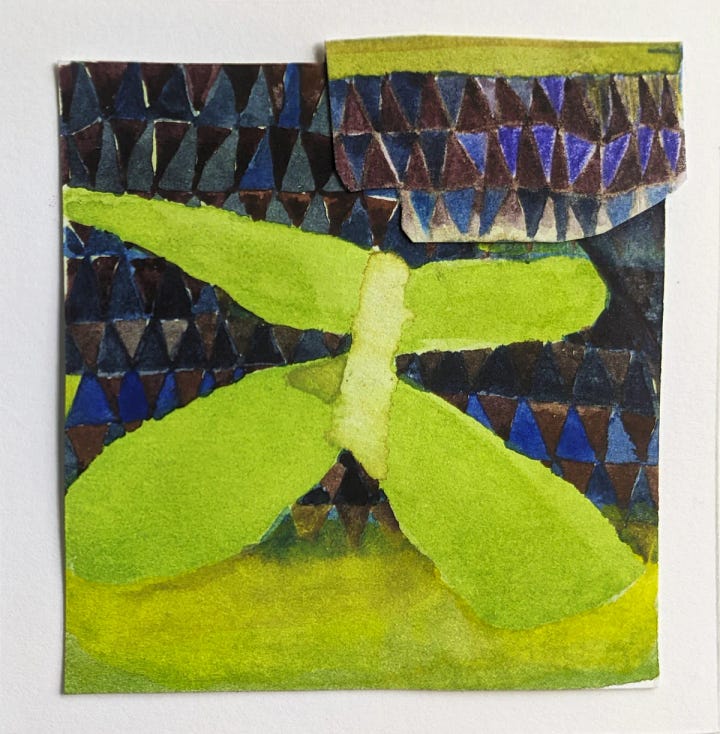
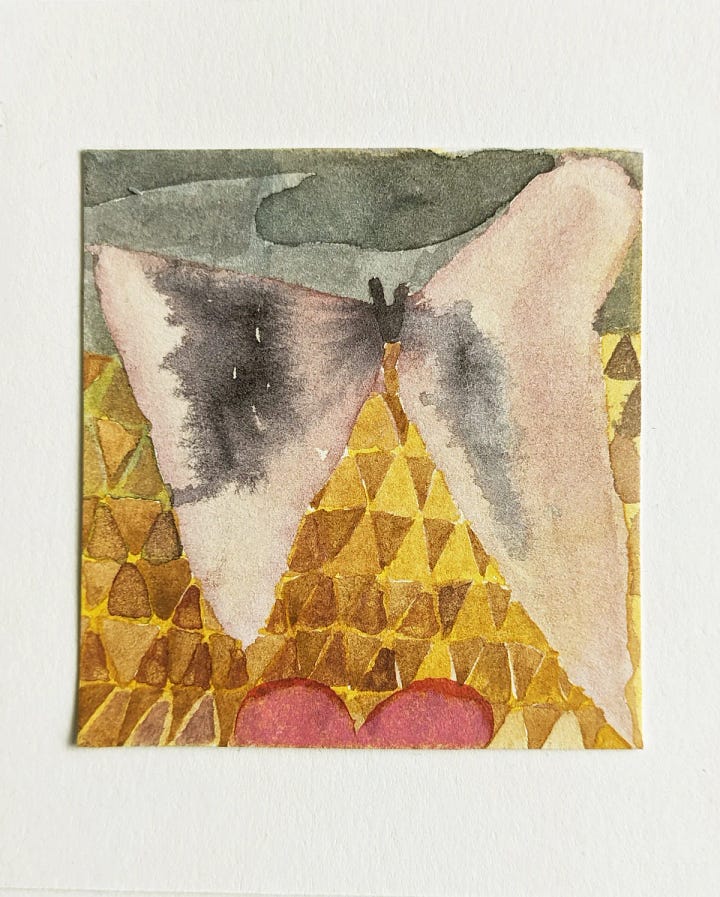

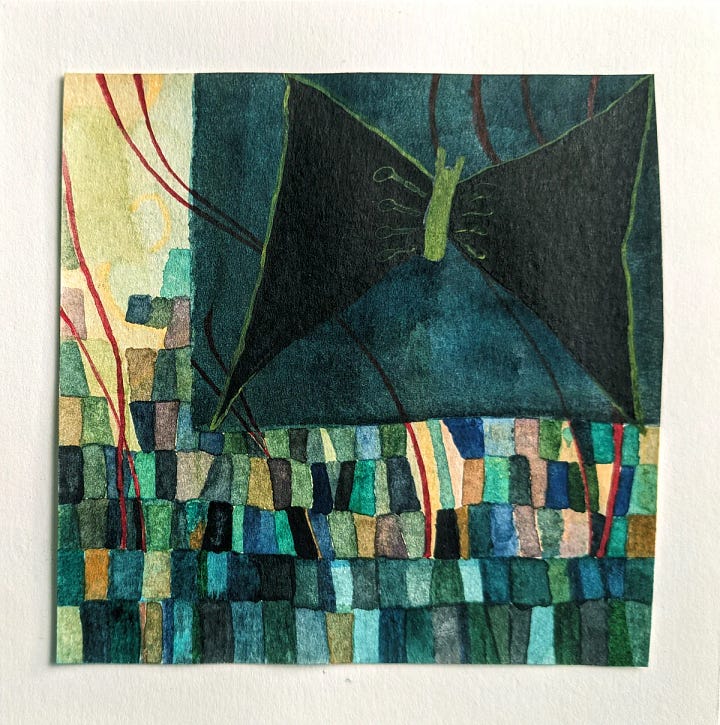
The shift wasn’t planned. It wasn’t strategic. But as the pigments pooled and wandered on the page, something in her loosened.
Kasturi didn’t always feel permission to listen to herself this way. As a child, painting meant spaciousness. “Time expanded. My internal world expanded. And the external world that I was experiencing also expanded.”
But by the time she reached university, that dream had been rerouted. People (adults) steered her toward a safer, employable path. She got a job in marketing and, for a while, she did what was expected.
But something kept tugging. What started as a gentle nudge became, in her words, “an urgent itch.” She enrolled in a year-long painting program, hoping to reconnect with her creative side. “I thought I’d just try lots of different things,” she said. “I wasn’t expecting anything to stick.”
Then came the final semester.
“Everything locked into place. It was a moment where I could really see the future and almost see what my days in the studio could look like. My inner child feels giddy that I’ve given myself the gift of getting to sprawl out creatively.”
That moment, the clarity, the vision of a life she hadn’t let herself believe in, didn’t arrive all at once.
“I was feeling quite lost and didn’t really have a path,” she reflected. “It was a slow charge. But then after the path became clear, it was like, oh, I need to run.”
Today, Kasturi earns income through freelance marketing work. This structure has allowed her to devote three days a week to painting. “I knew I needed work that would give me space,” she shared.
That space isn’t always easy to protect, especially when people ask what she does for a living.
“Sometimes when people ask ‘what do you do?’, I notice they feel a bit concerned by my response,” she told me. Sometimes she tells them she’s freelancing in marketing. Sometimes she omits the part about painting altogether. “It’s just easier depending on who I’m talking to,” she exhaled. “I don’t want to have to explain why art is necessary.” She doesn’t blame them. But the questions linger.
Even still, she’s learning to trust the life she’s building.
“It works for me,” she told me with a smile, “and I need to remind myself of that.”
Kasturi’s days are shaped by weather, energy, and intuition. Some days she paints. Some days she walks. Some days she reads. “Books have been a really great comfort,” she said. “They let me keep thinking about art and ideas, without feeling like I have to produce.”
Her inspirations reflect this rhythm. Anne Truitt’s Daybook, with its diaristic account of daily life as an artist. Agua Viva, Clarice Lispector’s swirling meditation on perception and language. Rebecca Solnit’s writing provides comfort in the face of uncertainty.
These aren’t just influences, they’re co-conspirators in a life lived deliberately. A reminder that creativity isn’t a race to the finish, it’s a relationship to the unknown.
Kasturi’s story is a testament to the power of adjusting gently, of noticing what no longer fits, of choosing, again and again, to return to what feels true. She is actively making a life, slowly and deliberately, in a culture that rewards speed and visibility.
For example, Kasturi is experimenting with monetizing her art by working with a gallery. For a while, it felt exciting. But then she began to notice her reaction to tying her art practice to money.
“While I’m beyond grateful that people love my work enough to buy it,” she shared in a Substack post. “I sometimes feel I might have liked a little longer to spend with my paintings, before sending them away to new homes.”
Suddenly, the studio wasn’t a place of spaciousness. It was a source of pressure. A place where deadlines replaced intuition. “I felt like I was falling behind at something I never agreed to compete in.”
That realization shifted something subtle but important: she decided to reclaim the terms of her creative output. For now, she’s decided to explore other paths to earning money that aren’t directly tied to selling her art, such as applying for artist grants.
“Maybe in the future, when I feel like I’ve got more ease, I’ll go back to trying to make selling art my full-time job. But for now, I need to stay really observant of what money brings up when it’s tied to art,” she pauses. “I remind myself that none of my decisions have to be permanent.”
That sentiment—”none of my decisions have to be permanent”—is the pulse of this newsletter. I started Quite Contrary to map what happens when we trade tidy scripts for living, breathing experiments in self-direction. Kasturi’s experiment is still running, still wonderfully messy, and that’s what makes it useful.
I’m beyond grateful she let us peek into her studio while the paint is still wet. Too often, we hear only the end-of-chapter version, polished by hindsight. Kasturi hands us the rough draft. Sharing from the middle takes a different kind of courage, and it teaches more than any neatly wrapped success story.
What did I learn in her studio? That listening can be louder than leaping. That play is an incredible strategy for finding yourself. And that she’s creating a life guided by self-awareness, supported by community, and sustained by meaningful, incremental acts of bravery. ◼︎
If her story and art move you half as much as they moved me, you’ll want to follow along:
For the comments:
What questions do you have for Kasturi about her art, balancing freelancing and studio time, her inspiration, or anything you’re curious about?
What did you love as a child that you’d like to return to?
Where do you turn when you need a reminder to play?




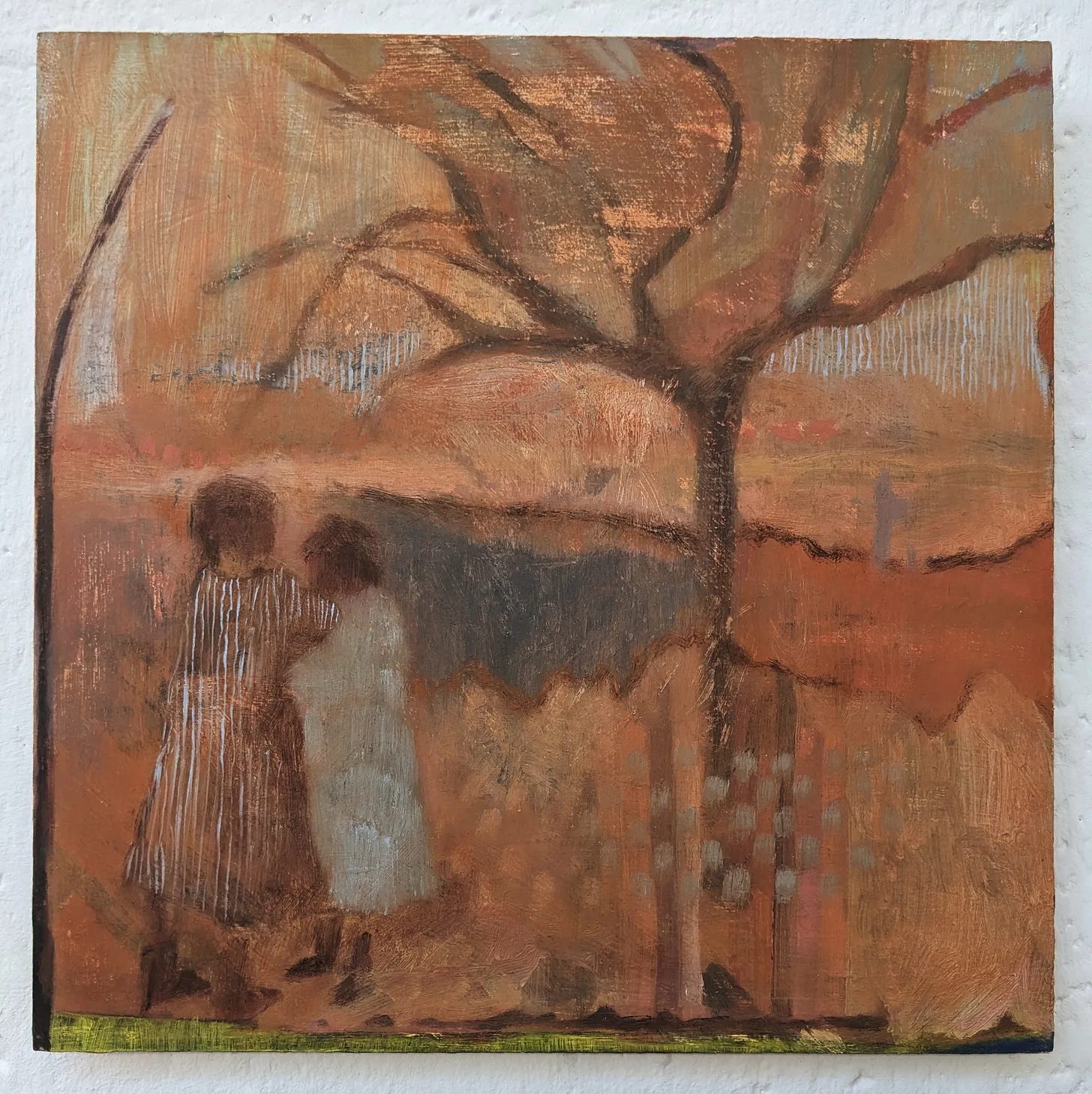

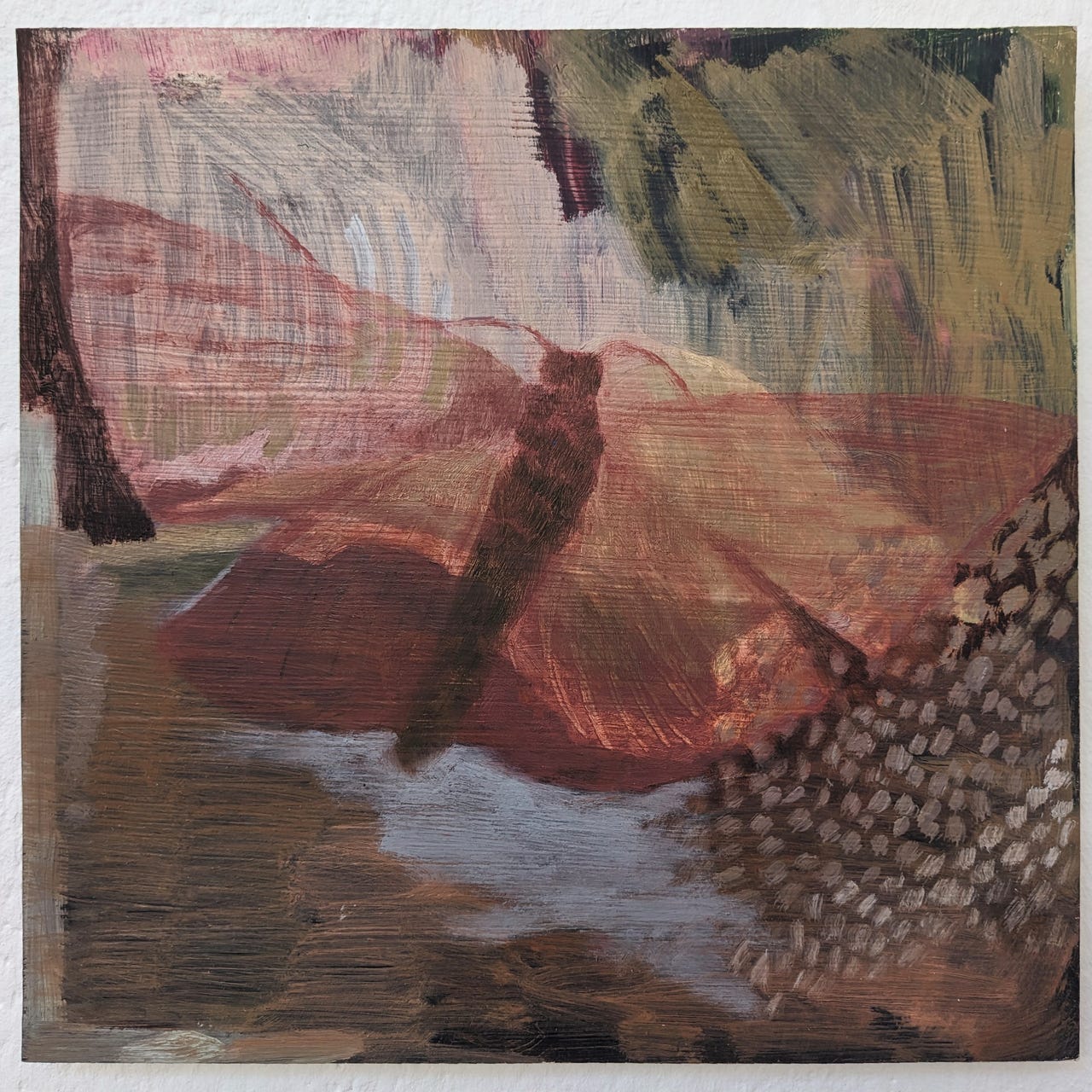
Thank you for sharing my story!
thank you for sharing, kasturi’s story really resonates!